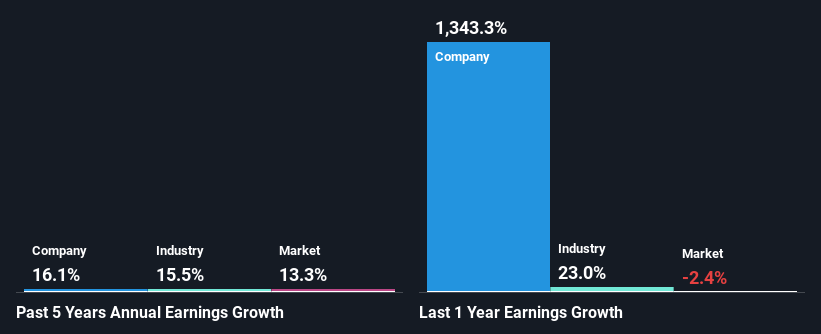Are Salesforce, Inc.’s (NYSE:CRM) Fundamentals Good Enough to Warrant Buying Given The Stock’s Recent Weakness?

It is hard to get excited after looking at Salesforce’s (NYSE:CRM) recent performance, when its stock has declined 21% over the past three months. However, the company’s fundamentals look pretty decent, and long-term financials are usually aligned with future market price movements. Particularly, we will be paying attention to Salesforce’s ROE today.
ROE or return on equity is a useful tool to assess how effectively a company can generate returns on the investment it received from its shareholders. In other words, it is a profitability ratio which measures the rate of return on the capital provided by the company’s shareholders.
Check out our latest analysis for Salesforce
How Is ROE Calculated?
Return on equity can be calculated by using the formula:
Return on Equity = Net Profit (from continuing operations) ÷ Shareholders’ Equity
So, based on the above formula, the ROE for Salesforce is:
9.2% = US$5.5b ÷ US$60b (Based on the trailing twelve months to April 2024).
The ‘return’ is the yearly profit. So, this means that for every $1 of its shareholder’s investments, the company generates a profit of $0.09.
What Is The Relationship Between ROE And Earnings Growth?
Thus far, we have learned that ROE measures how efficiently a company is generating its profits. Based on how much of its profits the company chooses to reinvest or “retain”, we are then able to evaluate a company’s future ability to generate profits. Generally speaking, other things being equal, firms with a high return on equity and profit retention, have a higher growth rate than firms that don’t share these attributes.
Salesforce’s Earnings Growth And 9.2% ROE
When you first look at it, Salesforce’s ROE doesn’t look that attractive. We then compared the company’s ROE to the broader industry and were disappointed to see that the ROE is lower than the industry average of 12%. Although, we can see that Salesforce saw a modest net income growth of 16% over the past five years. So, there might be other aspects that are positively influencing the company’s earnings growth. For example, it is possible that the company’s management has made some good strategic decisions, or that the company has a low payout ratio.
Next, on comparing Salesforce’s net income growth with the industry, we found that the company’s reported growth is similar to the industry average growth rate of 15% over the last few years.
Earnings growth is an important metric to consider when valuing a stock. The investor should try to establish if the expected growth or decline in earnings, whichever the case may be, is priced in. By doing so, they will have an idea if the stock is headed into clear blue waters or if swampy waters await. Is CRM fairly valued? This infographic on the company’s intrinsic value has everything you need to know.
Is Salesforce Using Its Retained Earnings Effectively?
In Salesforce’s case, its respectable earnings growth can probably be explained by its low three-year median payout ratio of 7.1% (or a retention ratio of 93%), which suggests that the company is investing most of its profits to grow its business.
Looking at the current analyst consensus data, we can see that the company’s future payout ratio is expected to rise to 10% over the next three years. Regardless, the future ROE for Salesforce is speculated to rise to 16% despite the anticipated increase in the payout ratio. There could probably be other factors that could be driving the future growth in the ROE.
Summary
On the whole, we do feel that Salesforce has some positive attributes. Even in spite of the low rate of return, the company has posted impressive earnings growth as a result of reinvesting heavily into its business. The latest industry analyst forecasts show that the company is expected to maintain its current growth rate. To know more about the company’s future earnings growth forecasts take a look at this free report on analyst forecasts for the company to find out more.
Have feedback on this article? Concerned about the content? Get in touch with us directly. Alternatively, email editorial-team (at) simplywallst.com.
This article by Simply Wall St is general in nature. We provide commentary based on historical data and analyst forecasts only using an unbiased methodology and our articles are not intended to be financial advice. It does not constitute a recommendation to buy or sell any stock, and does not take account of your objectives, or your financial situation. We aim to bring you long-term focused analysis driven by fundamental data. Note that our analysis may not factor in the latest price-sensitive company announcements or qualitative material. Simply Wall St has no position in any stocks mentioned.



